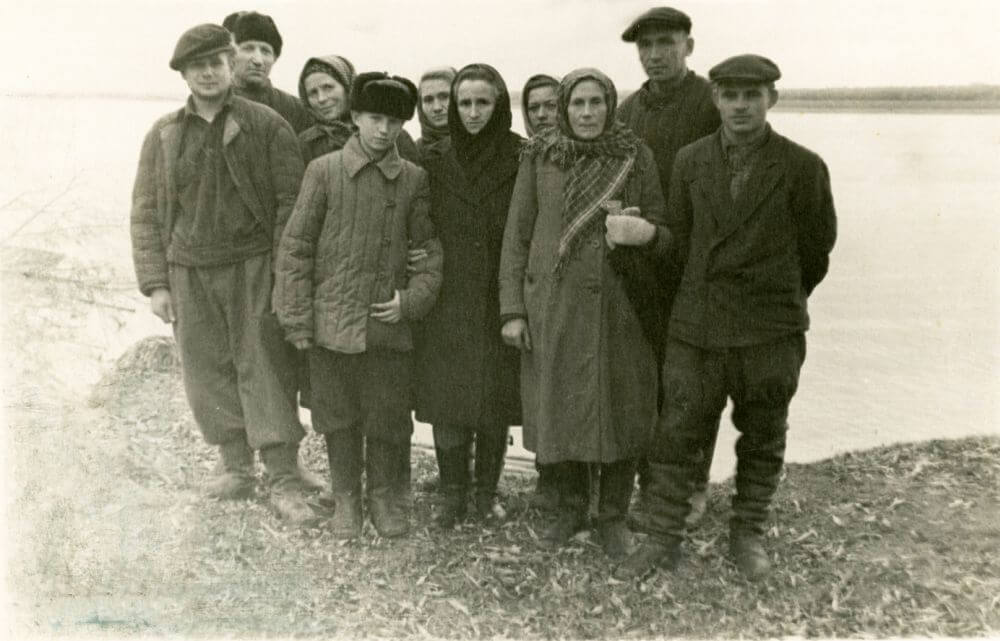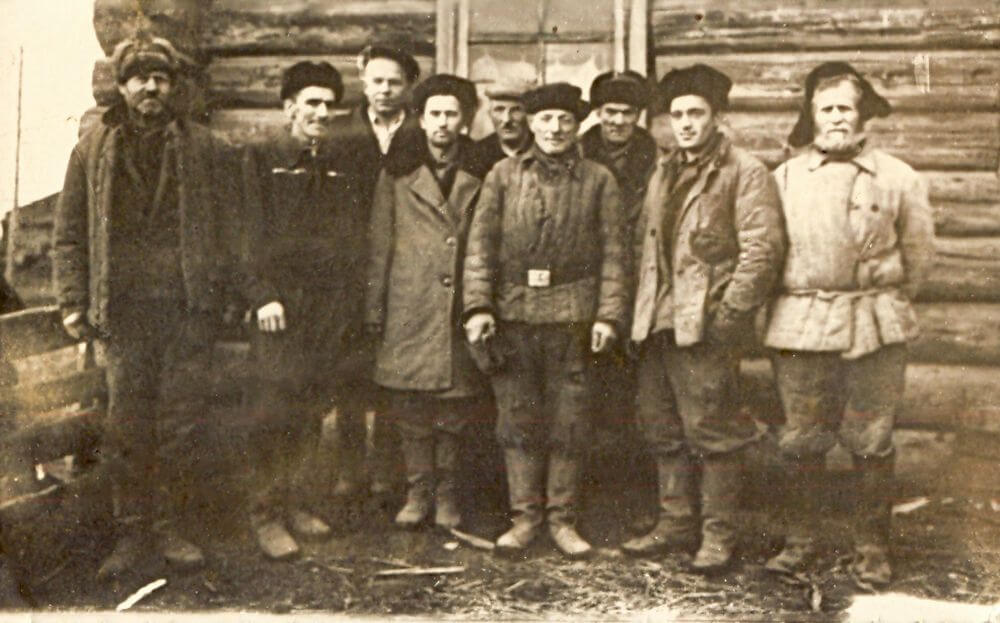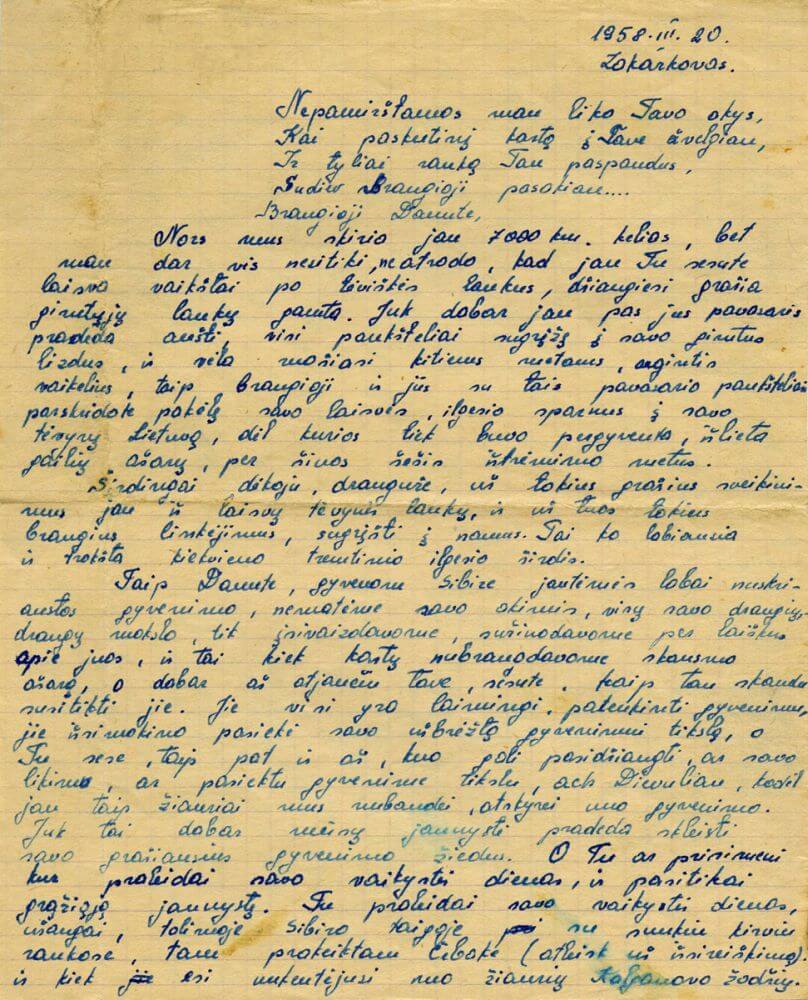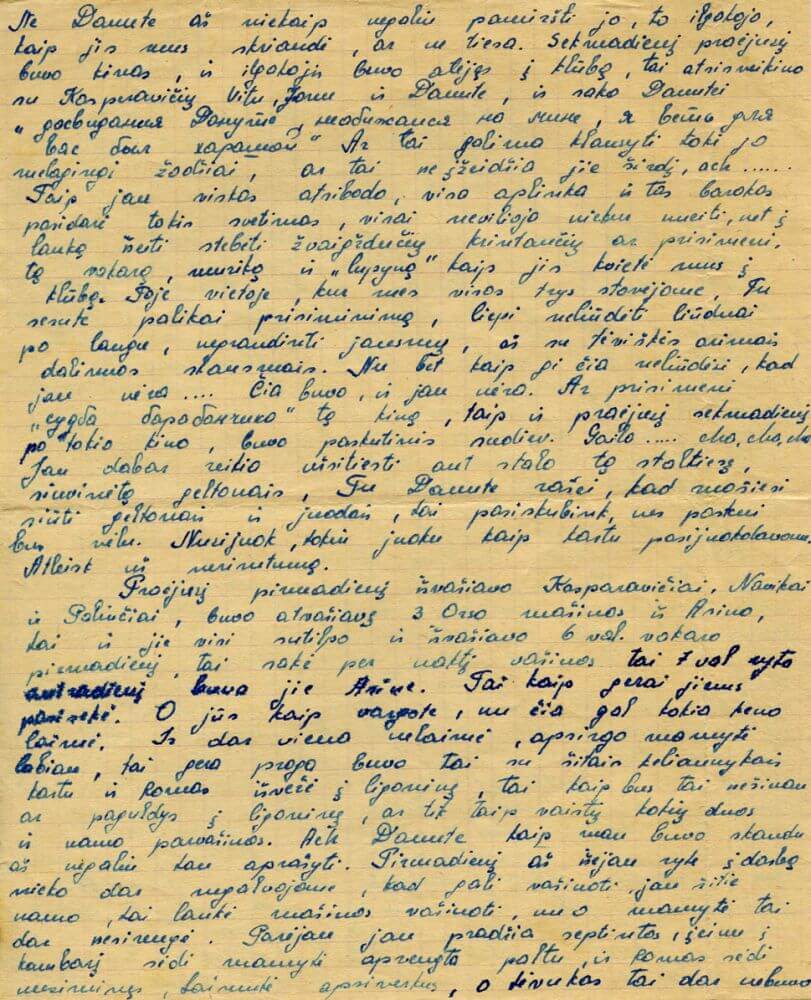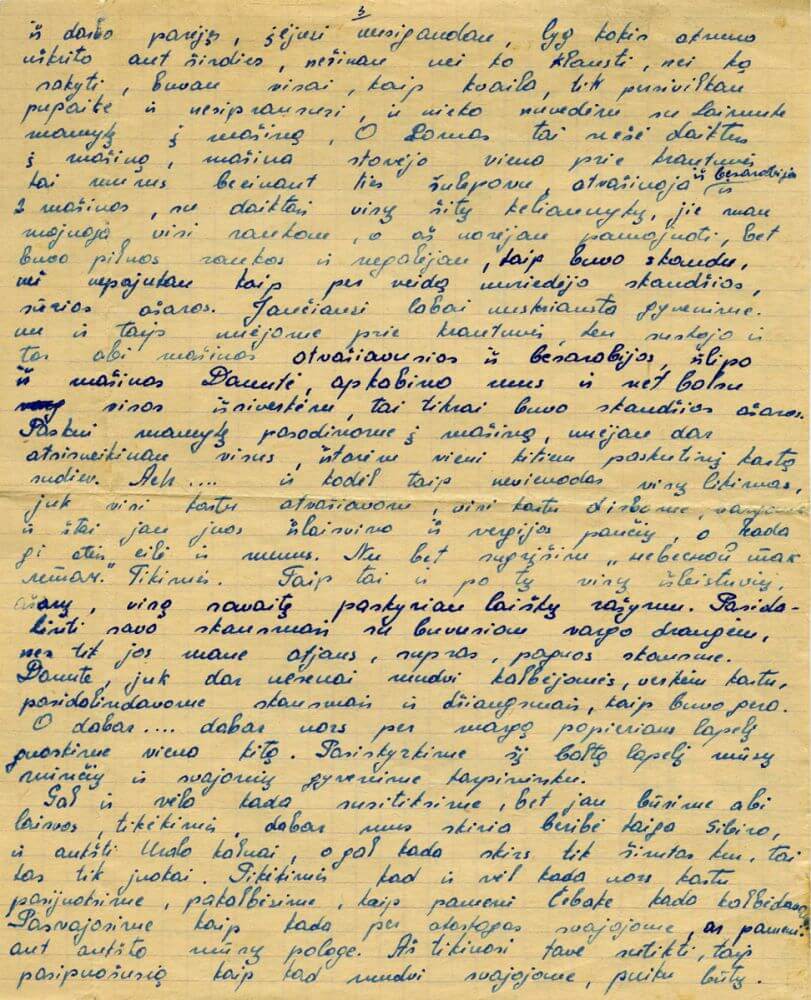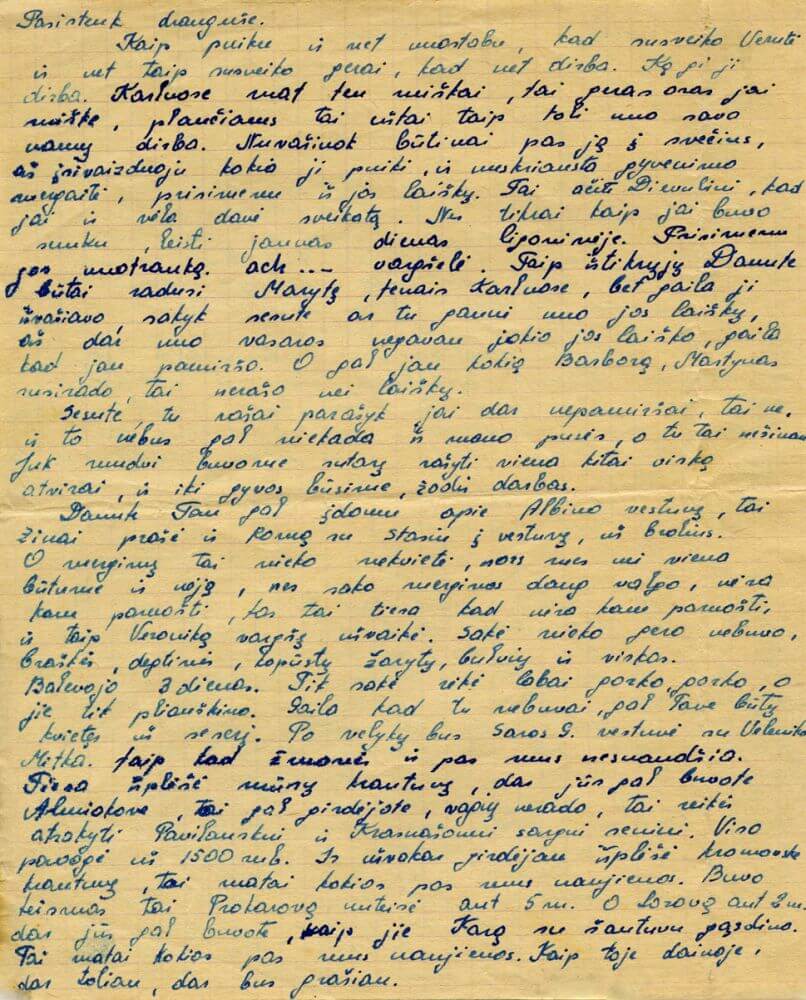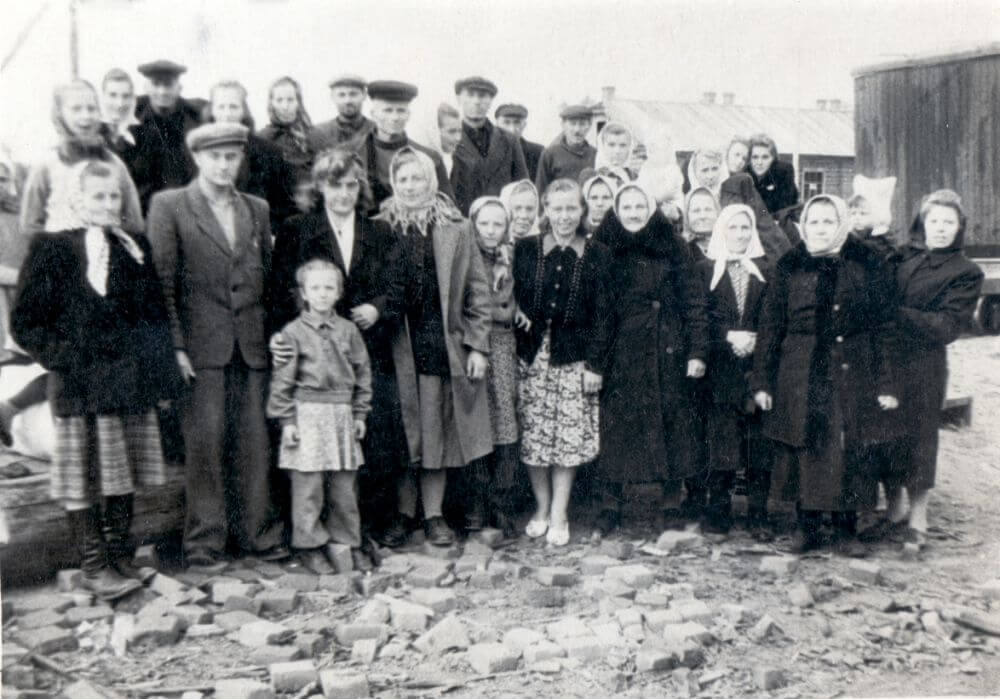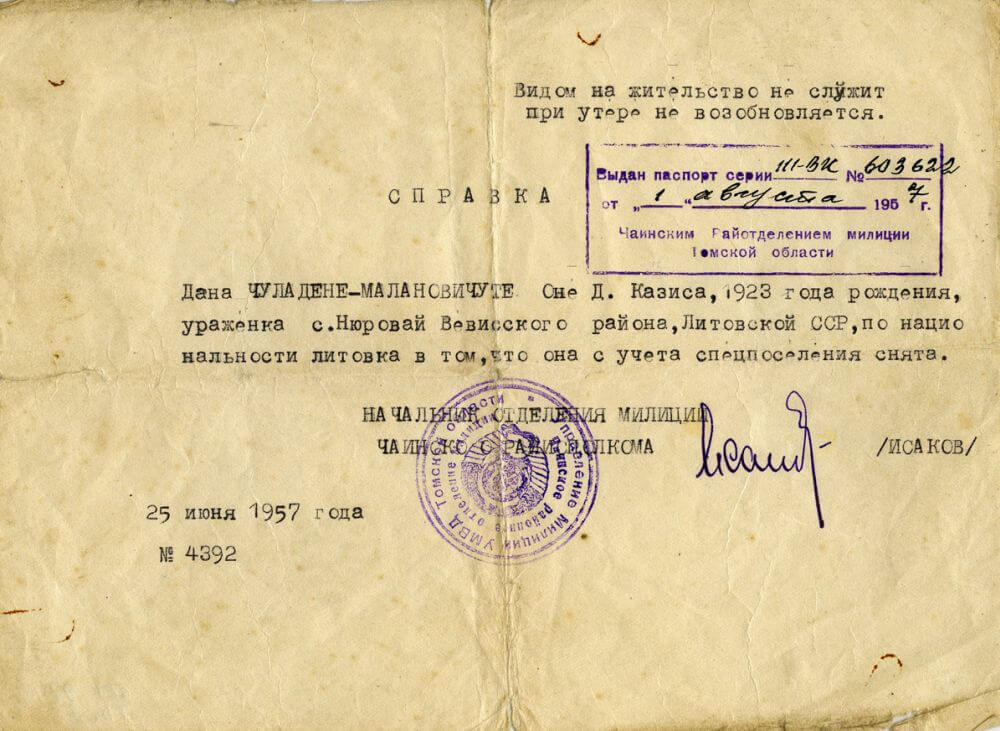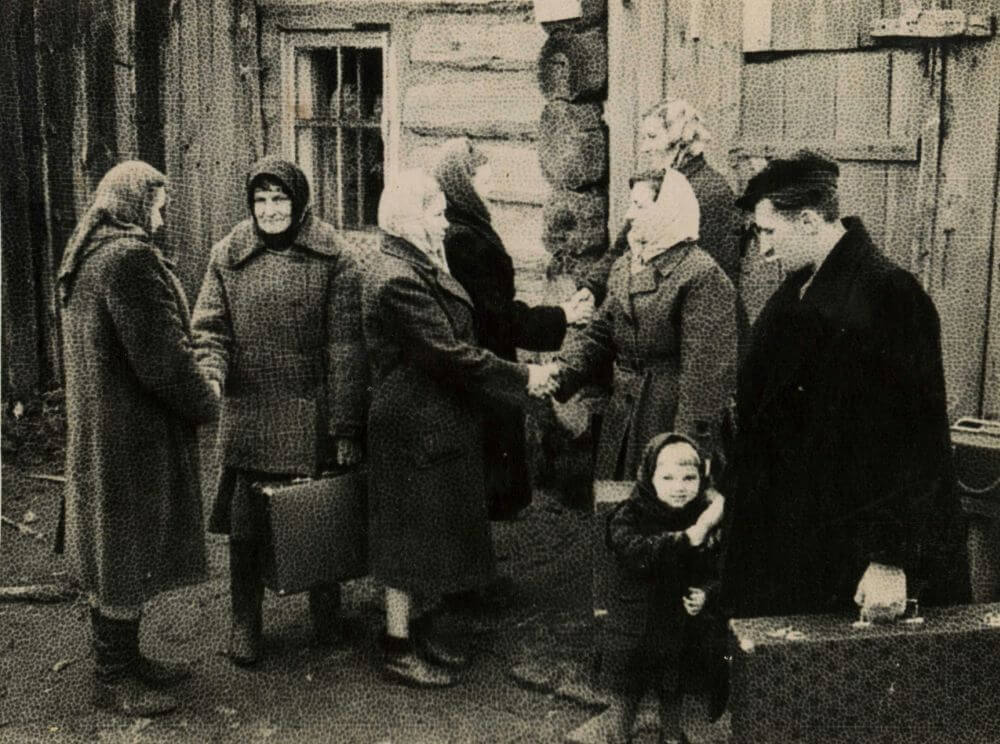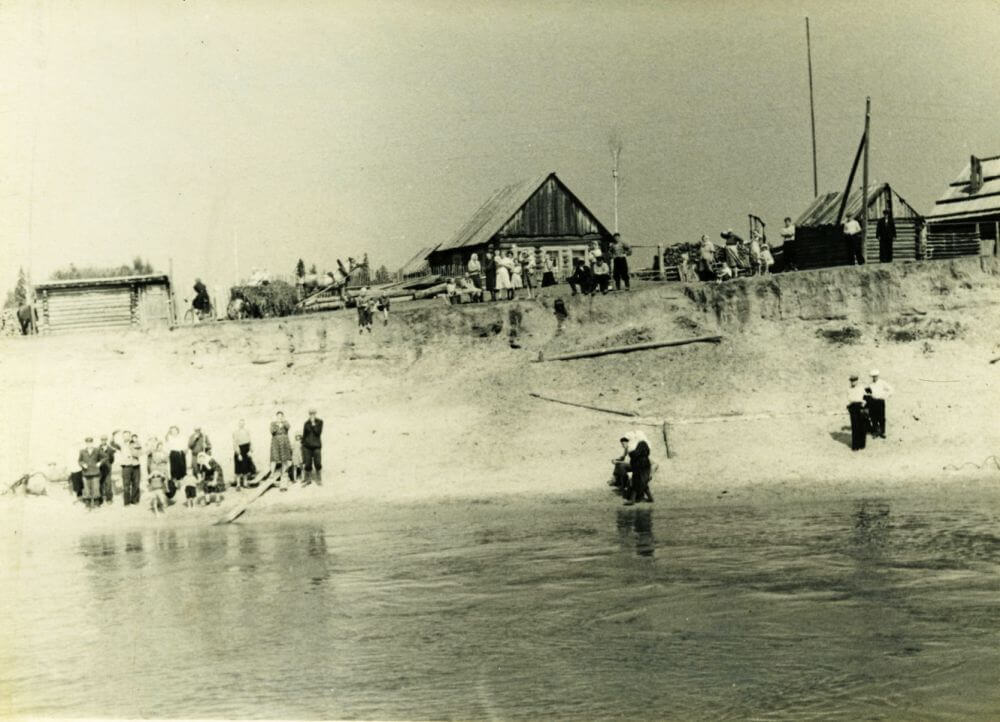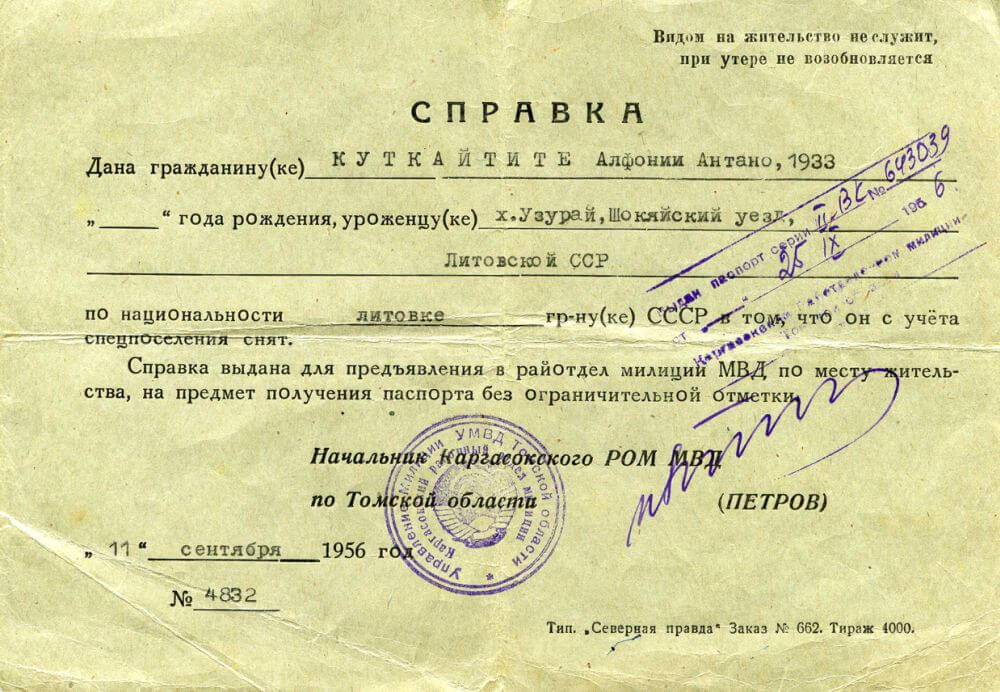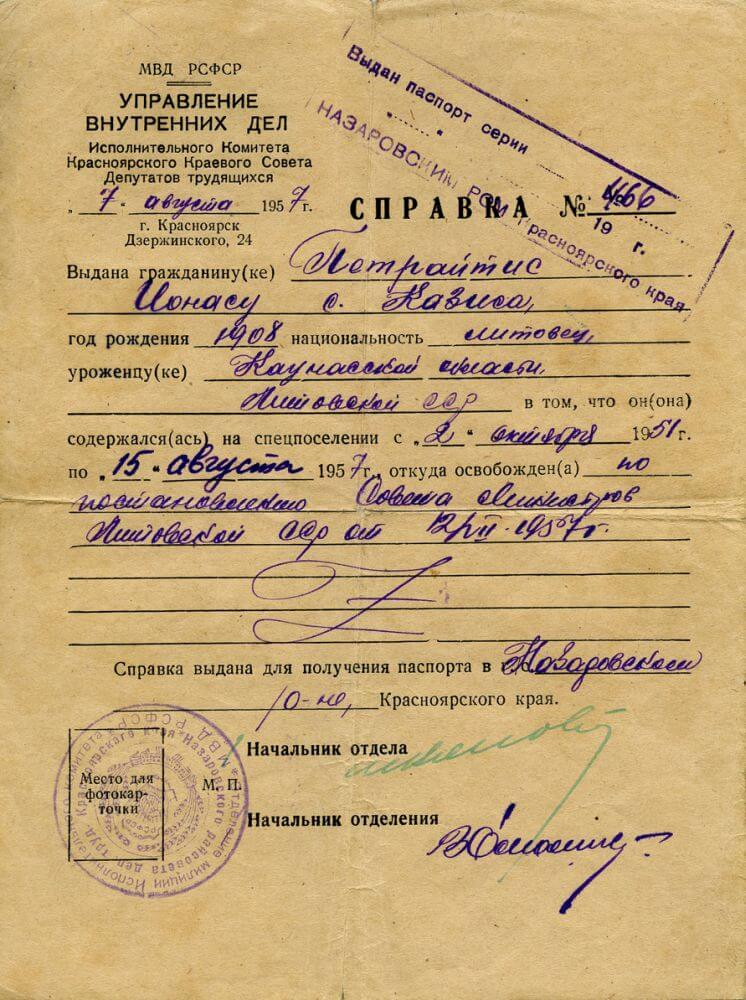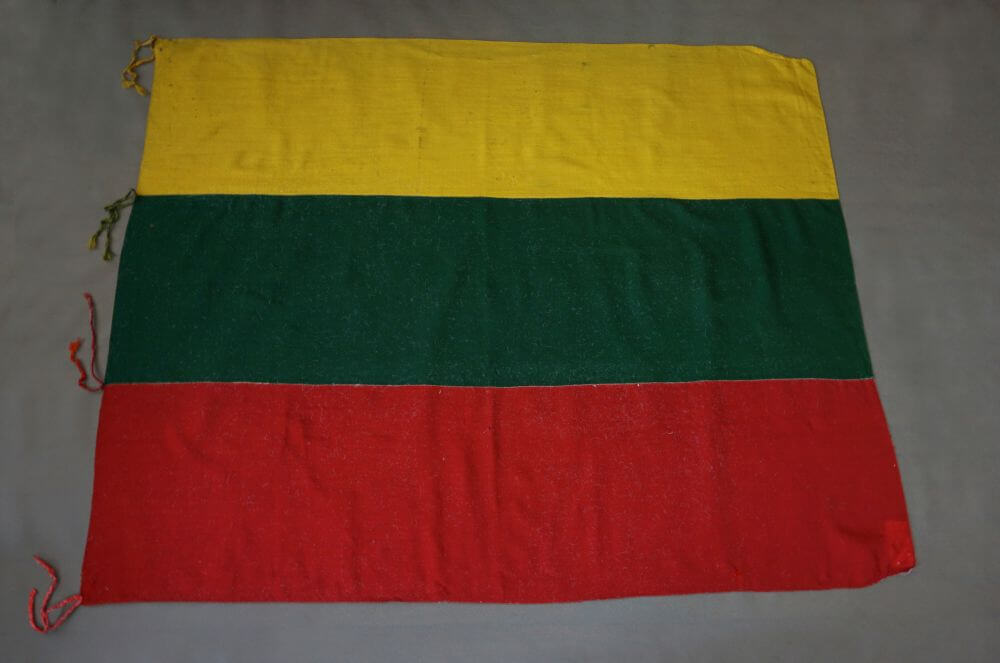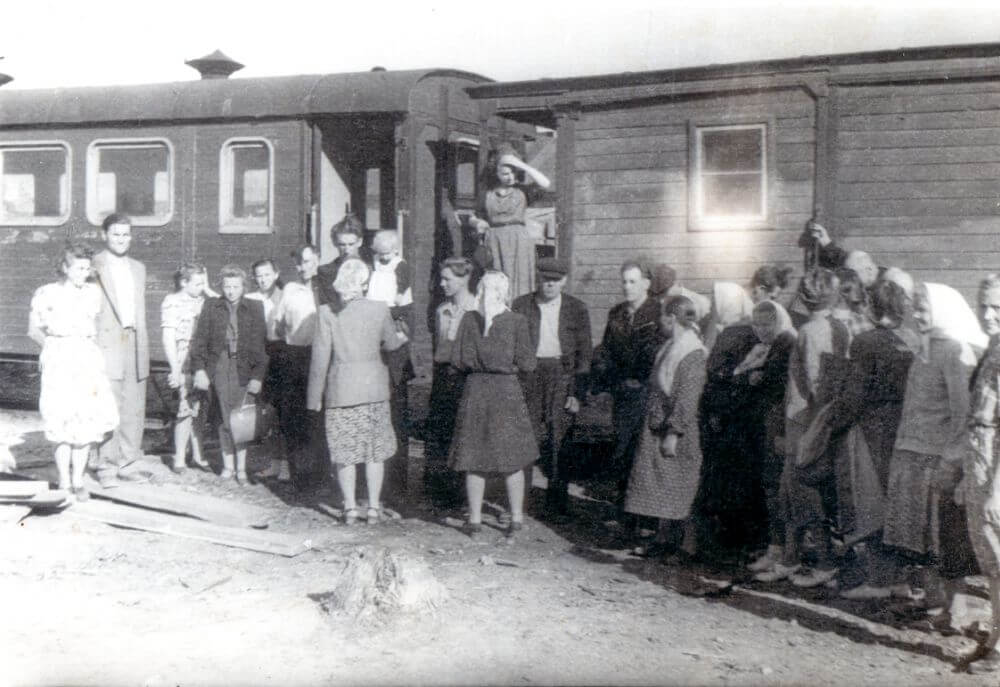
Letter written by an unidentified 1951 deportee to Danuta Domicela Češūnaitė, 1951 deportee, upon the latter’s return to Lithuania from exile. Zacharovka, Pyshkin Troitskoye district, Tomsk Oblast, 20 March 1958. The author of the letter recalls the time spent together in exile and the hardships endured and is saddened by the fact that many families of Lithuanian deportees are leaving for Lithuania, while her family has not yet been granted leave from exile.
From the Museum of Occupations and Freedom Fights (OLKM)
Danutė Domicelė Češūnaitė was deported with her family to Zacharovka, Pyshkin Troitskoye district, Tomsk Oblast, on 2 October 1951. The family was released in 1957 and returned to Lithuania in 1958.
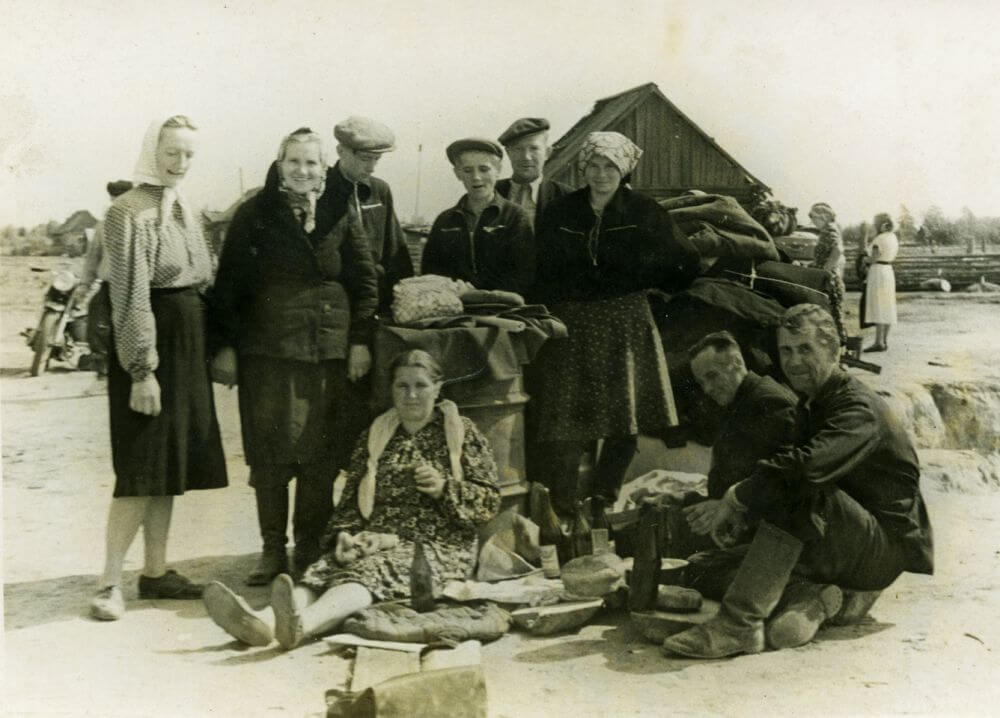
The Gvazdauskas family of 1951 deportees waiting for a steamer at the Beloyar pier before sailing off for Lithuania. Standing (from left): second – Elžbieta Gvazdauskienė, third – Antanas Gvazdauskas, fourth – Jonas Gvazdauskas, seventh (sitting) – Juozas Gvazdauskas. Teguldetsky district, Tomsk Oblast, 1958. Photographer Petras Gvazdauskas.
From the Museum of Occupations and Freedom Fights (OLKM)
Juozas and Elžbieta Gvazdauskas, together with their sons Antanas and Jonas, were deported in October 1951 to the Kuyanov forest farm, Teguldetsky district, Tomsk Oblast. In January 1952, their son Petras was deported to Malinovka, Tugan district, Tomsk Oblast, and later went to live with his family in the settlement of Kuyanov forest farm, and in 1957 to Krasnoyarsk. Juozas and Elžbieta Gvazdauskas returned to Lithuania with their sons Antanas and Jonas in 1958, Petras Gvazdauskas returned in 1962.
From the Museum of Occupations and Freedom Fights (OLKM)
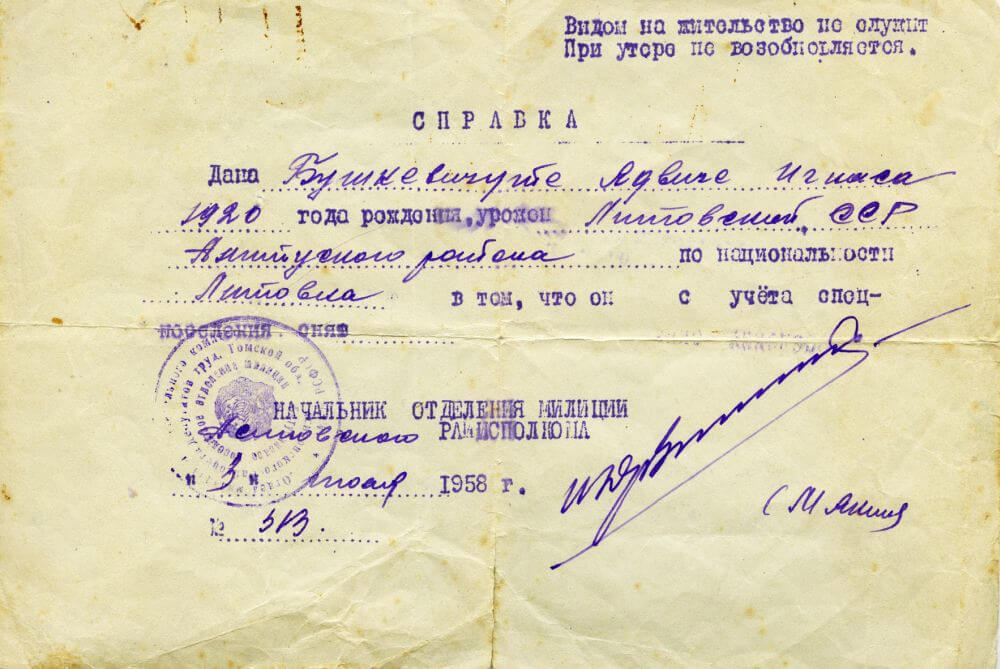
Certificate issued to 1951 deportee Jadvyga Buškevičiūtė, stating that she was removed from the special settlement register. The certificate was signed by the head of the militia department of the Asinovsky District Executive Committee. Tomsk Oblast, 1958.
From the Museum of Occupations and Freedom Fights (OLKM)
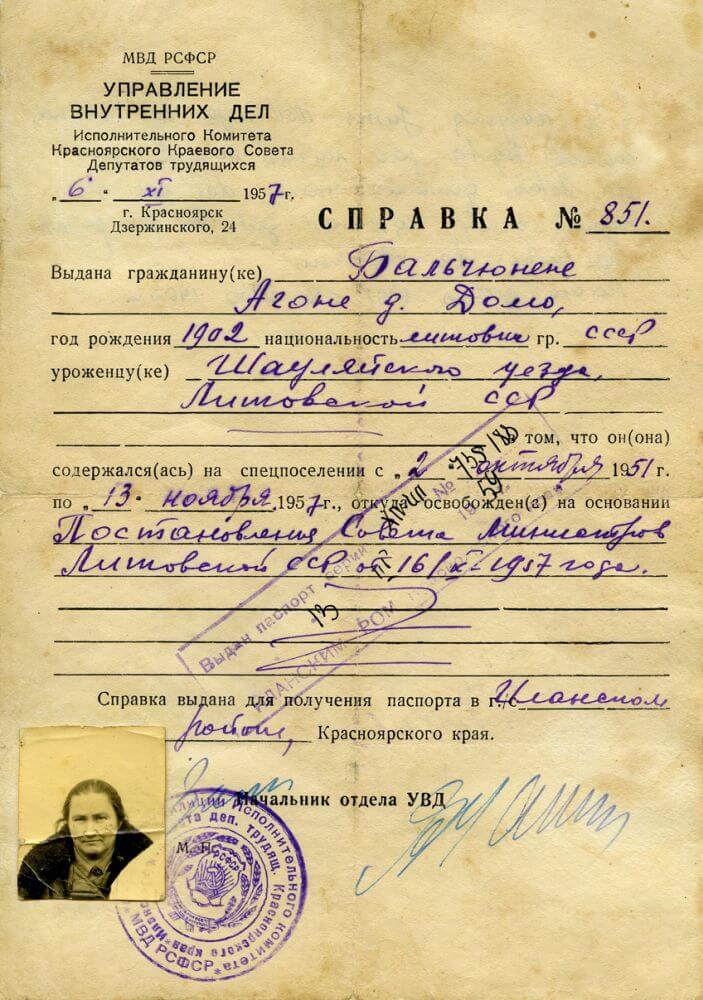
Certificate issued by the Ministry of the Interior of the Russian Soviet Federated Socialist Republic (RSFSR) to 1951 deportee Agota Balčiūnienė regarding her removal from the special settlement centre and the issue of a passport. Ilansky district, Krasnoyarsk Krai, 6 November 1957.
From the Museum of Occupations and Freedom Fights (OLKM)
In 1951, during the Soviet 1st of May celebration, Uršulė Naraškevičienė hoisted this flag on the wall of her house in Ukmergė. At that time, Vytautas Matijošius, a member of an underground organisation, was hiding from persecution in the house of Uršulė Naraškevičienė. When he found out about the woman’s flag and realised that he would receive unnecessary attention from the security services, he took the flag down and hid it in a pillow. He handed the pillow over to an acquaintance for safekeeping, who was exiled to Siberia in October 1951. The man took the pillow with him into exile with the three-colour flag hidden inside. The deportee kept it for the entire period of his exile and returned it to Vytautas Matijošius upon his return to Lithuania.
Vytautas Matijošius was a member of the underground organisation Granitas. He was arrested in 1951 and imprisoned in Vilnius. Sentenced by a military tribunal in 1952 to 25 years in a labour camp and 5 years of exile. In 1952 he was deported to Norilsk, Krasnoyarsk Krai. Released from the labour camp in 1956, he returned to Lithuania.
